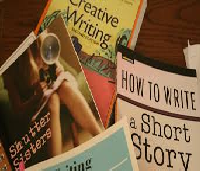Children Literature Critical Essay Prompt Your first essay assignment asks you to extend the conversations we have had in class to develop an applied textual argument of your own.

You are encouraged to build upon the things we discuss in class, but remember that turning in a paper which merely repeats the readings we do together will not be enough to get an “A;” you need to offer something of your own, and argue it well, to merit that grade.
Prompt
Using any two of our course texts, produce an essay that explains how children’s literature theorizes the child.
To do this, you will need to select two texts from those we have read, and create an argument which shows how each text theorizes, addresses and educates the child. Through close reading and analysis, your goal should be to articulate how each text projects the child to which they are addressed, in order to illustrate any overlaps or distinctions in how these texts develop the ideological concept of the child. Your paper should then include the following:
- An overarching CLAIM that articulates and argues the distinct versions of childhood that are presented by each of your texts
- Close reading and analysis that explains WHAT characteristics you are focusing on, HOW they are constructed, and WHY this is important for understanding each narrative as a whole
- A conclusion which discusses the importance of what you have analyzed in understanding each story, then broadening these implications to the larger functions and development of children’s literature, thinking especially about what it means that so many versions of what is appropriate for “children” exist
Please treat this as a formal essay, and review the handouts on “Close Reading,” “Claims,” and “Evidence and Analysis” on the Blackboard site before you write.
Children Literature Critical Essay Prompt Requirements
4-6 pages in length
Works Cited Page if using materials outside of the course?????MLA format (see “MLA Formatting” on Blackboard)
Example of a claim for this paper:
Aesop’s fable, “The Fox and the Crow,” asks children to reason by presenting multiple opportunities for identification in the characters of the fable.
Carroll’s Alice’s Adventures in Wonderland, however, understands the child as being problematically shaped by the education of her moment; in his portrayal of Alice, Carroll suggests that the impressionability of children has subjected them to an educational system that is failing to produce knowledgeable adults. Both texts assume that children are impressionable and require training to become functioning adults; however, where Aesop seems to address a child that is like a blank slate, Carroll acknowledges that there are many possible influences on children’s thinking, including negative ones. He offers up Alice as a corrective to these unproductive influences.




